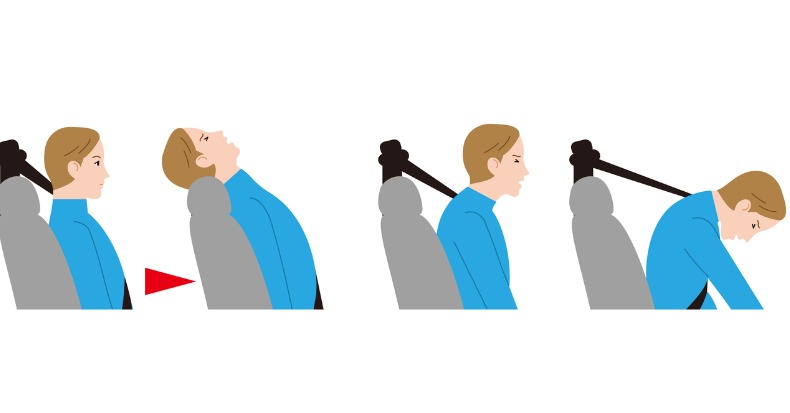Whiplash or cervical acceleration-deceleration disorder (CAD) is primarily associated with motor vehicle collisions (MVCs) and in particular, rear-end collisions. Last month, we discussed how CAD can be prevented and focused greatly on paying attention while driving and the position of the headrest. Whiplash is defined as an injury to the cervical spine (neck) caused by a rapid/sudden, usually unexpected, forceful movement. (Typically, forwards and backwards, if struck from in front or behind, or a side-to-side movement if struck from the side.) Even worse, when coupled with the head being rotated at the time of impact, the tearing of the ligaments, muscles, and/or joint capsules in the neck can cause a myriad of symptoms that can remain present for years, sometimes permanently. Some of these symptoms include:
- Neck and shoulder pain and/or stiffness
- Middle and low back pain
- Dizziness
- Vertigo (balance disturbance)
- Fatigue
- Numbness/Tingling
- Face/Jaw pain
- Cognitive dysfunction or brain injury (even without hitting the head directly)
- Sleep disorders
A report published in January 2011 discussed recent advances and a new law that went into effect later that year regarding the design of head restraints aimed at significantly reducing the injury severity and consequently the costs associated with CAD. The Code of Regulations (CFR) describes the new law (FMVSS 202a) as a standard, “…to reduce the frequency and severity of neck injury in rear-end and other collisions.” The law requires testing the absorbency (springiness), the locking mechanisms, and the height of the head restraint by making sure the restraint is above the center of gravity of the occupant’s head to reduce the “backset” (distance between the head and the restraint). This is done by testing the seat back and head restraint as a system to ensure the head restraint remains in its proper position throughout the collision. The concept is to reduce the rearward shift of the occupant’s head relative to their torso or to avoid extreme hyperextension. Companies have been manufacturing both dynamic and static head restraint systems in response to this new requirement for both front and rear seats. So, how does this equate to costs?
Between the years of 1988 and 1996 from 805,851 whiplash injuries, the National Accident Sampling System (NASS) reported the total annual cost of treatment, excluding damage to property, was $5.2 billion. This amount includes costs derived from medical, legal, insurance, productivity loss, and work loss. The report estimates, by improving the seat back and head restraint position to the occupant’s head, a total reduction of 14,247 whiplash injuries is expected which will have a nearly $92 million total cost reduction through both direct injury costs and also the indirect societal costs!





